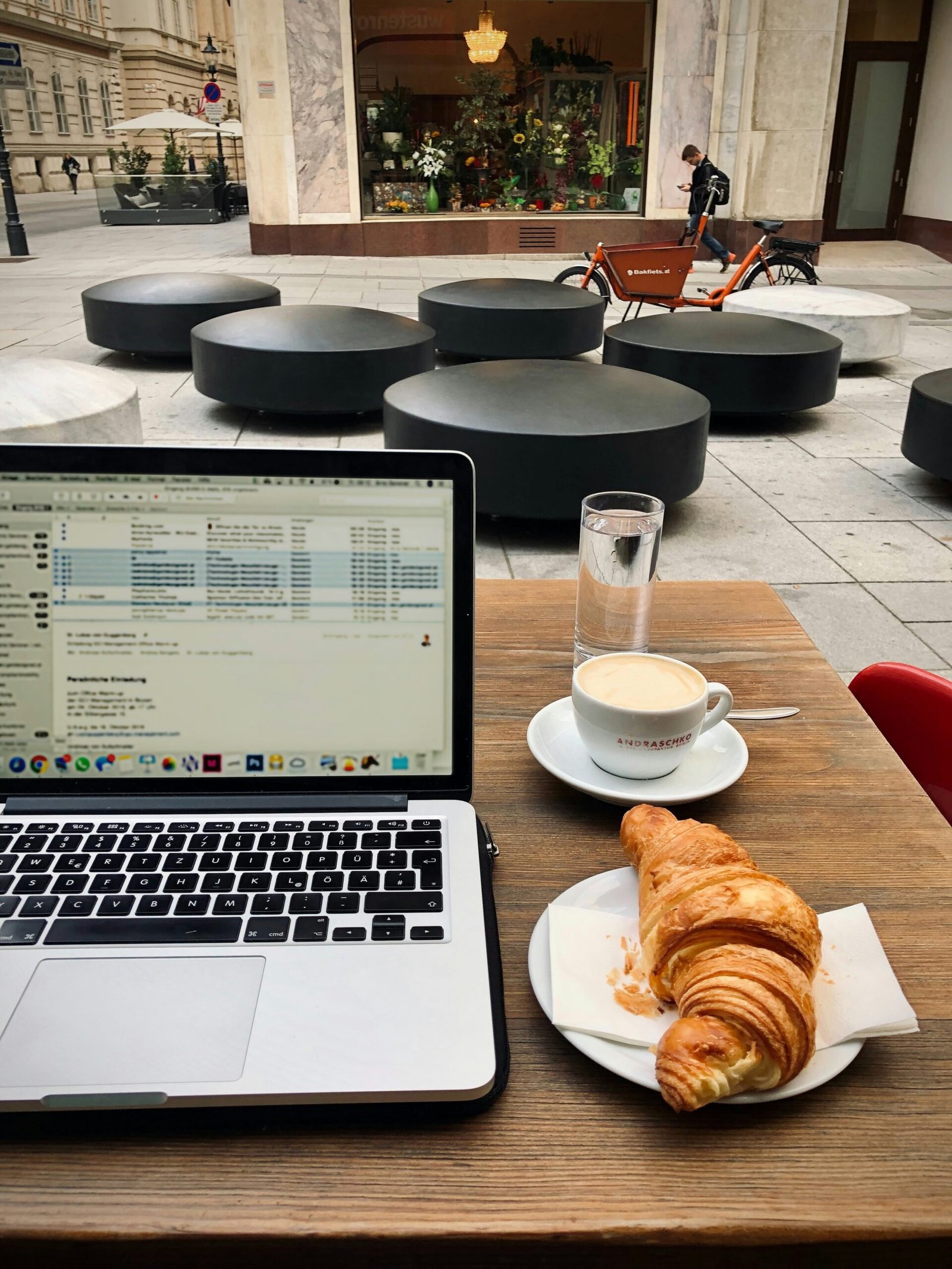Introduction to Panel Interviews
Panel interviews are a distinctive format of the interview process wherein multiple interviewers, rather than a single individual, engage with the candidate simultaneously. This approach is commonly employed in various professional settings to assess candidates comprehensively, drawing on the collective expertise and perspectives of the panel members. Panel interviews typically include representatives from different departments or areas of expertise, such as human resources, technical teams, and senior management. By involving multiple interviewers, organizations aim to obtain a more rounded evaluation of the candidate’s skills, experience, and suitability for the role.
The primary purpose of a panel interview is to streamline the decision-making process. By gathering all relevant stakeholders in one setting, companies can ensure that diverse viewpoints are considered, and a more balanced judgment is made. This method not only saves time but also reduces the potential for biases that might arise in one-on-one interviews. Additionally, panel interviews often mirror the collaborative nature of modern workplaces, providing insights into how candidates perform in a group setting and under pressure.
Panel interviews are commonly used in scenarios where the role requires multi-faceted skills or a high level of collaboration with various departments. They are particularly prevalent in senior-level positions, academia, healthcare, and large-scale project-based roles. One of the key differences between panel interviews and traditional one-on-one interviews is the dynamic and interactive nature of the former. Candidates must navigate questions from multiple interviewers, each with their own focus areas and concerns, which can be both a challenge and an opportunity to demonstrate versatility and adaptability.
For candidates, the unique challenges of panel interviews include managing the dynamics of addressing multiple individuals, maintaining engagement with all panel members, and effectively showcasing their qualifications under the scrutiny of several evaluators. For interviewers, panel interviews provide a platform to observe the candidate’s interpersonal skills, collaborative abilities, and how they handle complex, multi-directional questioning. Understanding these nuances is crucial for effective preparation and successful navigation of the panel interview process.
Understanding the Structure of a Panel Interview
A panel interview is a comprehensive evaluation method where multiple interviewers, usually ranging from three to five, assess a candidate simultaneously. Each member of the panel typically represents a different facet of the organization, such as human resources, the department head, and a potential team member. This diverse composition ensures a well-rounded assessment of the candidate’s qualifications, skills, and cultural fit within the company.
The roles of the interviewers in a panel interview are distinct yet complementary. The human resources representative often focuses on the candidate’s overall fit with the company culture and values, while the department head may delve into technical competencies and industry-specific knowledge. A potential team member, on the other hand, might evaluate how well the candidate would integrate into the existing team dynamics and contribute to ongoing projects.
The format of questioning in a panel interview can vary, but it usually involves a mix of technical, behavioral, and situational questions. Technical questions assess the candidate’s expertise and skills relevant to the job. Behavioral questions, often structured around the STAR (Situation, Task, Action, Result) method, aim to understand past experiences and how they shape the candidate’s approach to work. Situational questions present hypothetical scenarios to gauge problem-solving abilities and decision-making processes.
The flow of a panel interview is often structured yet flexible. Typically, each interviewer takes turns asking questions, allowing the candidate to respond to a diverse range of inquiries. This format not only provides a holistic view of the candidate’s capabilities but also helps to manage time efficiently. Candidates should be prepared for the possibility that different interviewers may emphasize different aspects of their qualifications. For instance, one interviewer might focus on technical proficiencies, while another might prioritize interpersonal skills and cultural alignment.
Understanding the structure of a panel interview is crucial for effective preparation. Recognizing the distinct roles of each interviewer and the variety of question formats can help candidates tailor their responses accordingly, ultimately presenting a well-rounded and compelling case for their candidacy.
The Importance of Research and Preparation
Thorough preparation is a cornerstone of success in panel interviews, where multiple interviewers assess a candidate’s fit for the role and company. To stand out, candidates must embark on a comprehensive research journey, starting with the organization itself. Understanding the company’s mission, values, and culture provides a foundation for tailoring responses that resonate with what the company prioritizes. Digging into recent achievements and challenges can also offer insights into the company’s current trajectory and areas where your skills might be particularly valuable.
Equally crucial is familiarizing oneself with the job description. Each bullet point in the description highlights essential skills and experiences the employer is seeking. By aligning your qualifications with these requirements, you can craft responses that directly address the needs of the role, showcasing your suitability. However, a deeper layer of preparation involves understanding the dynamics of the panel members themselves. Researching the interviewers, usually listed in the interview invite, can provide context on their roles within the company, their professional backgrounds, and even their personal interests if publicly available. Platforms like LinkedIn can be invaluable for this aspect of preparation.
Moreover, gaining insights into the company’s culture can significantly influence how you present yourself. Review the company’s website, social media profiles, and recent news articles to gauge the organizational environment. Understanding whether the culture is more collaborative or competitive, for instance, can help you highlight experiences that reflect your adaptability to such an environment. Additionally, being aware of the company’s recent milestones or challenges can help you formulate questions and answers that demonstrate your proactive interest and problem-solving capabilities.
In summary, the depth of your preparation for a panel interview can distinguish you as a well-informed and highly motivated candidate. By leveraging comprehensive research on the company, understanding the job description, and familiarizing yourself with the panel members, you position yourself to deliver compelling and relevant responses, thereby enhancing your chances of success.
Crafting Your Responses
When preparing for a panel interview, the ability to deliver compelling and concise responses is vital. One effective technique for addressing behavioral questions is the STAR method, which stands for Situation, Task, Action, and Result. This structured approach allows you to provide clear and comprehensive answers, illustrating how your past experiences align with the role you’re applying for.
Begin by describing the Situation you were in to set the context. Next, outline your specific Task or responsibility within that scenario. Follow this by detailing the Actions you took to address the challenge or achieve the objective. Finally, conclude with the Results, emphasizing the positive outcomes of your actions. This method not only helps in organizing your thoughts but also demonstrates your problem-solving skills and achievements effectively.
When it comes to technical inquiries, it’s essential to remain composed and articulate. Start by fully understanding the question, and don’t hesitate to ask for clarification if needed. Provide a step-by-step explanation of your thought process and methodologies. If appropriate, incorporate relevant technical jargon to show your expertise, but ensure that your response remains accessible to all panelists, including those who may not have a technical background.
Managing multiple questions from different panelists can be challenging. Prioritize active listening to each question, and take a moment to formulate your response. Address each panelist respectfully and maintain eye contact to engage the entire group. If you receive overlapping questions, you can bridge your responses by highlighting common themes or linking related topics. This approach not only showcases your ability to think on your feet but also ensures that your answers are coherent and impactful.
Ultimately, your goal is to present yourself as a well-rounded candidate who can handle diverse inquiries with confidence and poise. By mastering the STAR method, articulating technical knowledge clearly, and adeptly navigating multiple questions, you can make a lasting impression on the panel and enhance your chances of success.
Non-Verbal Communication and Body Language
Non-verbal communication plays a crucial role in the success of a panel interview. While your responses to questions are important, your body language and non-verbal cues can significantly impact the panel’s perception of you. One of the key aspects to focus on is eye contact. Maintaining consistent eye contact with each panelist demonstrates confidence and engagement. It’s important to distribute your gaze evenly among all members of the panel, ensuring that no one feels overlooked or neglected.
Posture is another fundamental element of non-verbal communication. Sitting up straight with your shoulders back conveys confidence and attentiveness. Avoid slouching or leaning too far back, as these can be perceived as signs of disinterest or lack of confidence. Instead, aim for a balanced and open posture that reflects your professionalism and readiness.
Facial expressions are also critical during a panel interview. A genuine smile can help establish rapport and make you appear more approachable. However, it’s important to be mindful of your expressions throughout the interview. Ensure that you appear attentive and interested, even when listening to questions or comments from the panelists. Avoid negative expressions such as frowning or showing signs of frustration, as these can leave a negative impression.
Hand gestures can further enhance your communication, but they should be used judiciously. Controlled and purposeful gestures can emphasize key points and convey enthusiasm. However, excessive or erratic movements can be distracting and may detract from your message. Keep your hands visible and avoid fidgeting or crossing your arms, as these actions can signal nervousness or defensiveness.
Finally, it’s essential to remain engaged throughout the interview. Show active listening by nodding in agreement and responding thoughtfully to each panelist. This not only demonstrates your attentiveness but also shows respect for each interviewer’s input. By mastering these aspects of non-verbal communication and body language, you can enhance your overall presence and leave a positive and lasting impression on the panel.
Handling Difficult Questions and Situations
During a panel interview, you may encounter challenging questions or unexpected scenarios that test your composure and adaptability. To effectively handle these difficult questions, it is crucial to maintain a calm and collected demeanor. Taking a moment to breathe and gather your thoughts can prevent you from becoming flustered. This approach allows you to respond thoughtfully rather than reactively.
If you are faced with a question that you do not immediately understand, do not hesitate to ask for clarification. Requesting further details can provide you with the necessary context to formulate a more accurate and comprehensive response. Additionally, it demonstrates to the panel that you are attentive and committed to providing well-considered answers.
Honesty is another essential component when addressing difficult questions in a panel interview. If you do not know the answer to a particular question, admit it candidly and express your willingness to learn. Attempting to fabricate an answer can undermine your credibility. Instead, provide an example of a similar situation where you acquired new knowledge or skills, showcasing your ability to adapt and grow.
Handling interruptions or disagreements among panel members requires diplomacy and patience. If panelists begin to interrupt each other, pause and allow them to finish their discussion before continuing with your response. This approach not only demonstrates respect but also ensures that you are addressing the concerns of all panel members. If you encounter a disagreement, acknowledge the differing perspectives and focus on presenting your point of view in a balanced and respectful manner.
Staying calm under pressure, seeking clarification when necessary, and addressing questions with honesty and thoughtfulness are key strategies for navigating the complexities of a panel interview. By handling interruptions and disagreements gracefully, you can showcase your interpersonal skills and adaptability, leaving a positive impression on your interviewers.
Post-Interview Etiquette and Follow-Up
After concluding a panel interview, it is crucial to engage in post-interview etiquette to leave a lasting positive impression. One of the most important steps is to send personalized thank-you notes to each panelist. Expressing gratitude for the opportunity and the time they took to meet with you is not only polite but also demonstrates your appreciation for their consideration.
In your thank-you notes, make sure to reiterate your interest in the position. This is an excellent opportunity to highlight key points discussed during the interview, thereby reinforcing your enthusiasm and suitability for the role. Mentioning specific topics or questions that were part of the interview can also show that you were engaged and attentive throughout the process.
When crafting your thank-you notes, aim to send them within 24 to 48 hours after the interview. This promptness reflects your eagerness and professionalism. Each note should be tailored to the individual panelist, reflecting any unique interactions or points of discussion you had with them. This personalized approach can make a significant difference, setting you apart from other candidates who might send generic messages.
Follow-up communications should be handled with care. If you have not received a response within the timeframe initially communicated by the interviewers, it is appropriate to send a polite follow-up email. In this message, gently inquire about the status of your application and reaffirm your continued interest in the position. Maintaining a courteous tone is essential, as it underscores your professionalism and respect for the hiring process.
By adhering to these post-interview etiquette guidelines, you can effectively navigate this critical phase of the job application process. Demonstrating gratitude, reiterating your interest, and managing follow-up communications with finesse will positively influence the panelists’ perceptions and potentially enhance your chances of securing the position.
Common Mistakes to Avoid
When preparing for a panel interview, one must be mindful of several common pitfalls that can hinder performance. A frequent mistake is failing to address all panelists equally. Candidates often focus their responses on one interviewer, usually the person who asked the question, while neglecting others. This can inadvertently signal disinterest or disrespect. To avoid this, ensure you make eye contact with each panelist during your responses, demonstrating your engagement with the entire group.
Another prevalent error is providing overly lengthy or off-topic answers. While it is important to be thorough, excessively long responses can lose the panelists’ attention and dilute the impact of your key points. Aim to provide concise, relevant answers that directly address the questions posed. Practicing your responses ahead of time can help you stay focused and articulate.
Inadequate preparation is another critical mistake. Many candidates underestimate the importance of researching the company, the role, and the panelists themselves. This lack of preparation can become glaringly obvious during the interview, resulting in missed opportunities to impress. Thoroughly review the job description, company website, and any available information about the interviewers. This will enable you to tailor your responses to align with the company’s goals and culture.
Additionally, neglecting to prepare for common interview questions can leave you floundering when asked. While you cannot predict every question, familiarizing yourself with frequently asked questions and rehearsing your responses can boost your confidence and readiness. Practice articulating your skills and experiences in a way that is both concise and compelling.
By avoiding these common mistakes—addressing all panelists, keeping answers relevant and concise, and preparing thoroughly—candidates can present themselves more effectively. This approach not only enhances your chances of success but also leaves a lasting, positive impression on the interview panel.





